Estepona is a small, cozy harbour town with a charming historical centre. We invite you to follow this guided walk through nine unique places around Estepona - from shopping streets, to castle ruins, and poetry along the way, there's tons to see here!
First things first. Here is a brief introduction to the city.
Arriving by bus
Coming into Estepona from the bus station, you go west along the coast taking Avenida del Litoral. Shortly after the second roundabout, you can walk down to the beach and follow the seaside promenade. It takes almost 20 minutes to walk to the centre; alternatively you could take a taxi or the local L1 bus.
A guided walk of Estepona
Here are some suggestions on how to see the city's unique streets and most remarkable monuments by foot.
1. Calle Caridad
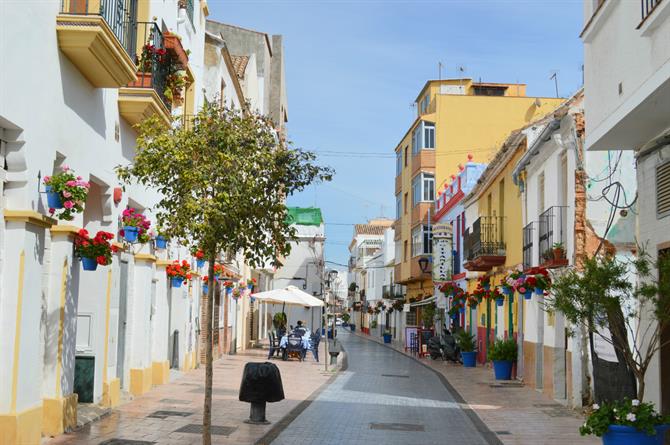
We start off at Calle Caridad, one of the long streets that runs parallel to the shoreline. Here you will find an abundance of restaurants with everything from Spanish tapas, to Argentinian steak and Italian pasta, to Mediterranean seafood and shellfish. Take note of this area for later in the evening.
From Calle Caridad, turn right onto one of the sloping side streets such as Calle San José, which becomes Calle San Antonio. After hitting the shopping street of Calle Terrazza, turn right and go up to the parish church of Parroquia de Nuestra Señora de los Remedios.
2. Iglesia de los Remedios
Iglesia Parroquial de Santa María de los Remedios, or simply Remedios Church, is in Plaza de San Francisco, a little above the town. The church was built in 1473 and underwent a thorough renovation in 1772. The building quickly wore down again due to large amounts of dust from the nearby castle ruins and was renovated again in 1818.
The architecture bears characteristics of several styles, including the American colonial style of the 1500s and the 1700s' Rococo style. The church received two new bells in 2000, for a total of four bells.
3. Plaza de las Flores
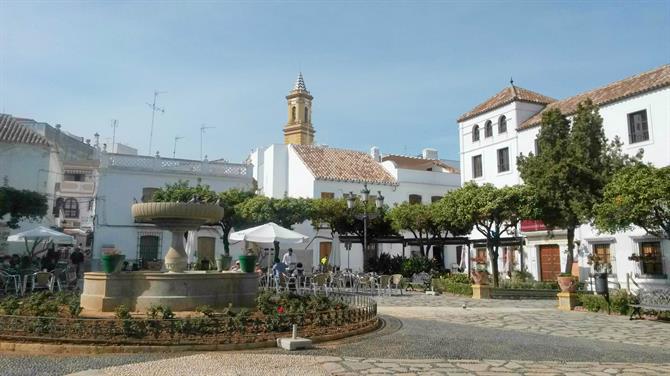
We are now moving back down Calle Terrazza and turning onto Plaza Doctor Arce. From here we go further southwest to Plaza de las Flores. Here you will find one of the town's tourism offices, which is open from 9:00-15:00 on weekdays and from 10:00-14:00 on Sunday.
Time for your morning coffee? You're in luck because there are several great cafes in the area. You might choose to head down Calle Carmen Sevilla to the corner of Calle Real to find Cafetería Real. The place was formerly called - and still is referred to as - El Manicomio, after a madhouse that was once located here. The café is typically Spanish with traditional dishes on the menu and old pictures of Estepona decorating the walls.
4. Castillo de San Luis
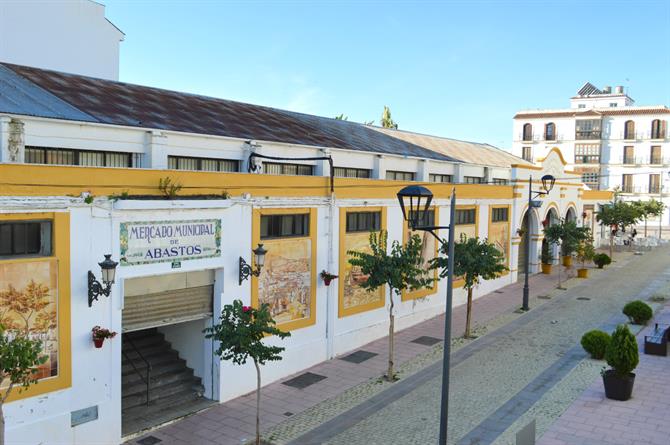
From Plaza de las Flores, we go through the southwest corner at Calle Raphael, which becomes Calle Castillo. On the right are the ruins of Castillo San Luis, a castle built in 1457 by the Spaniards to drive the Moors out of Estepona. Castillo San Luis was built over top of the ruins of the Moorish castle of Estebuna, from which the city takes its name.
Behind the castle is a narrow exotic garden leading off Plaza Casa Cañada. From here, take a stroll down Calle Villa into the old market building, Mercado de Abastos, which today only houses a handful of stalls and a small cafe. From above the market, you can look down onto the octagonal foundation of a former Roman mausoleum.
5. Archaeology Museum
Just north of Plaza Cañada is Plaza Blas Infante. Estepona's Old Town Hall is found here. Today it is the location of the city's archaeological museum, which holds great treasures that have been crucial to mapping out Estepona's history.
On the walls bordering the square, you will also see a beautifully decorated tile displaying a hand-painted poem. The poem, written in Arabic, is part of Estepona's Poetry Route.
6. Plaza del Reloj

Around the corner from Plaza Blas Infante is Plaza del Reloj (there is also a shortcut to this square by taking the stairs from Calle Villa). The square is named after the clock tower located in the square.
The clock tower belonged to a church, which like Castillo San Luis was built during the Spaniards' conquest of the city. The church was devastated by an earthquake in 1755 and it was then decided that only the clock tower would be kept. Today there is a school behind the tower.
There is also a pavilion on the square where flamenco performances can be seen during the annual feria.
7. Parque de la Constitución
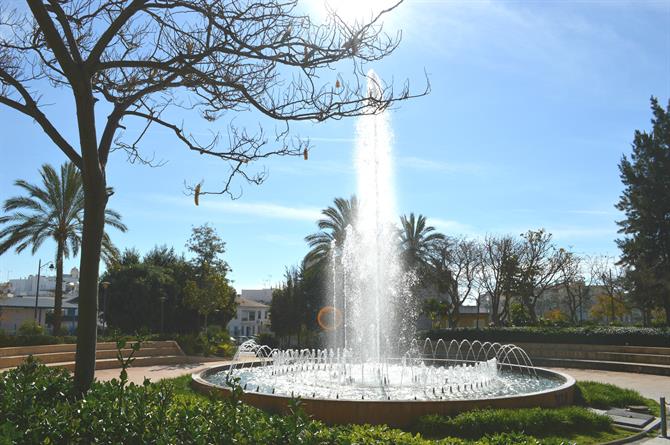
Time for a break? Head to the beautiful Parque de la Constitución. Here you can see multiple sculptures or relax in the shade with a café con leche para llevar (coffee with milk to go). If you have children, they will certainly enjoy the park's playground. In the evenings, the park's large fountain is illuminated.
Parque de la Constitución is also an excellent starting point for exploring the north of Estepona, where many of the huge murals that make up the Ruta de los Murales Artísticos are located.
8. Bullfighting Arena and museums
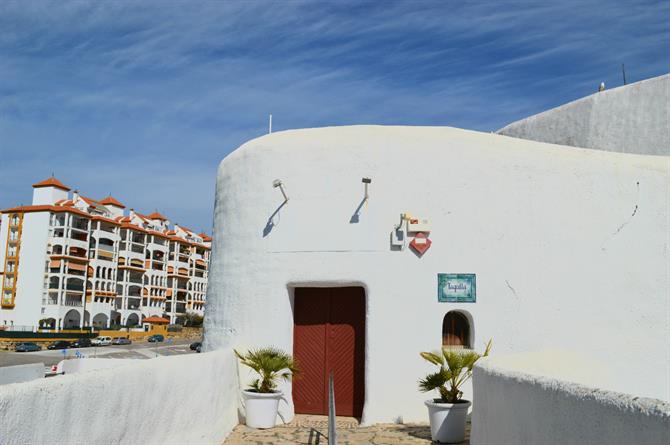
After a well-deserved rest, we head south-west to the Estepona bullring. The arena was built in 1972 in a unique asymmetrical design. Today, it is only used for bullfights during the annual feria, as well as for markets and concerts.
Four museums are located in the same building as the arena. Read more about both the Estepona bullring and museums in more detail.
Estepona's second tourism office is also not far from the arena. It is located on Calle Torre Almenara and opening hours are the same as the Plaza de las Flores tourism office.
9. Estepona's Port - Puerto Marina
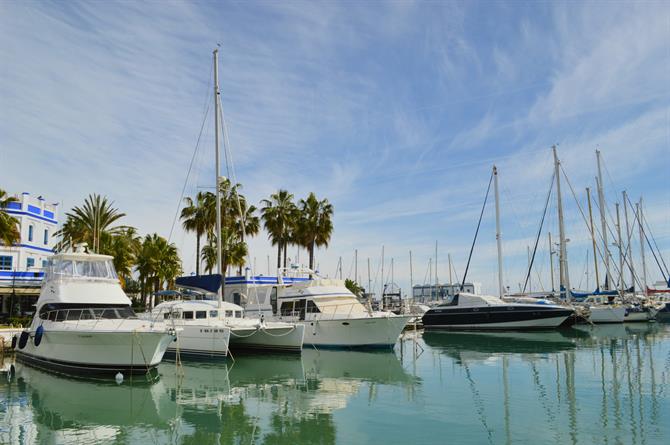
Our walk ends with stroll through Estepona's marina.
The port has 447 moorings, and every Sunday there is market along the harbour, where you can buy various crafts and leather goods. There are also tons of bars and restaurants here for every taste.
Wishing you an amazing day in Estepona and an excellent walking tour!
